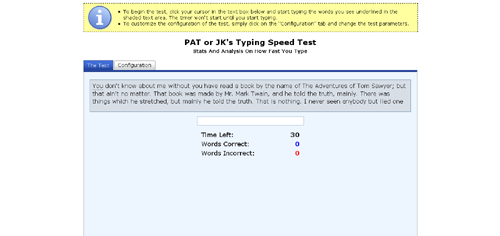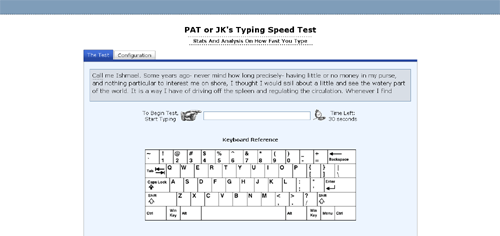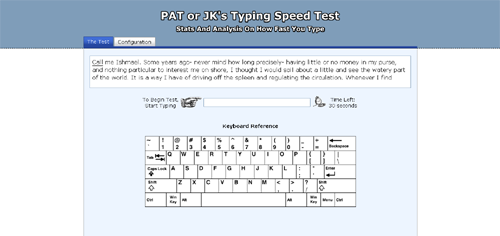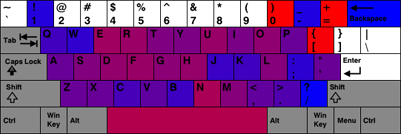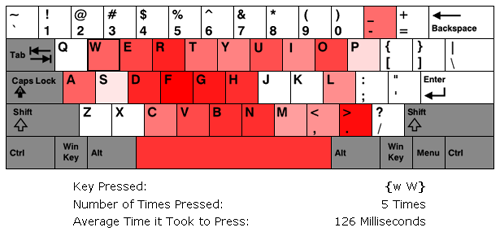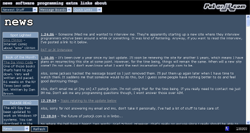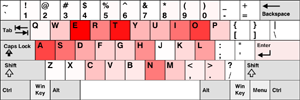I’ve uploaded a new version of my Keyboard Layout Analyzer. You can see a full screen capture of the output page below. The new version has a layout similar to the one I discussed in my last post, and has a different chart set up, as well as a hand full of other small new features.
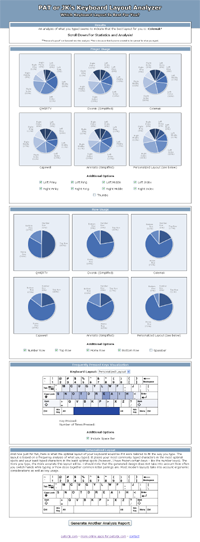
The New Layout For Keyboard Layout Analyzer Output
This new version is essentially a complete re-write of the old version. I had been making mental notes of features I thought would make the program a lot more useful, and after thinking about how I’d implement these new features, I realized I’d be better off just re-writing the application instead of modifying the old one.
This re-write was also a way for me to “pay down” my “technical debt” (I think I like that term), as I was able to more efficiently implement certain things to make them a lot more flexible. When I write stuff for fun, a lot of the time I just go with the first or second implementation I think of and then get to work. This re-write will probably serve as a good lesson learned, since the re-write was a little more painful than I expected. Only one of the new features that I thought up is in the program right now (the new chart set up), I didn’t have time to get to the rest of them, though I hope to implement them in the next couple of weeks.
Here’s an overview of what’s in this version:
- Updated interface.
- Able to view charts of different layouts all at once.
- Able to select what pieces of information you want to factor into the charts.
- Addition of the Capewell and Arensito (Simplified) layouts. However, this set up isn’t final. These layouts will still be in the next version, but the options will be a little different.
- “Personal Layout” factored into the statistics.
- A layout recommendation is made based on what you typed.
This new implementation also consists of 26% fewer lines of code. 🙂
This new version was tested out in Firefox 3.0 and 3.5, Chrome, and IE8. Unfortunately, the new IE8 messed up my install of IE6Eolas, so I’m not sure how the app works in IE6 or IE7. Oh, and I hate to rehash the cliché of bashing IE, but IE8 is actually a lot slower than IE6 and IE7 when it comes to executing JavaScript. Enough so that I was actually a little dismayed. I had been hearing mostly positive things about IE8, but I just didn’t see anything that I thought was that impressive.
Anyway, if you have any suggestions for the Keyboard Layout Analyzer or find any bugs in it let me know.
